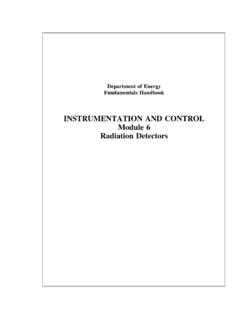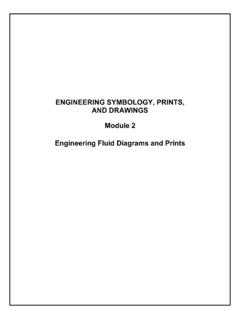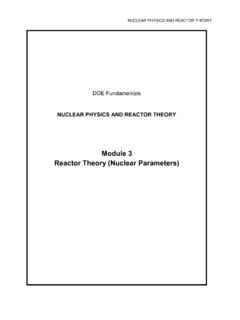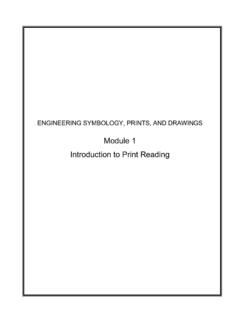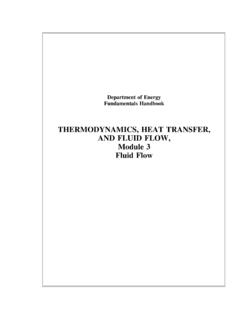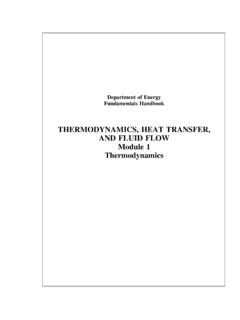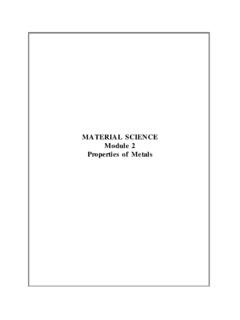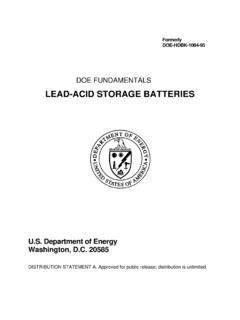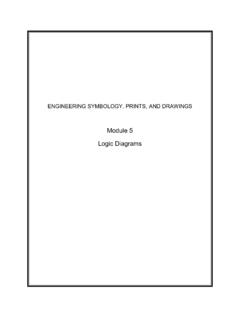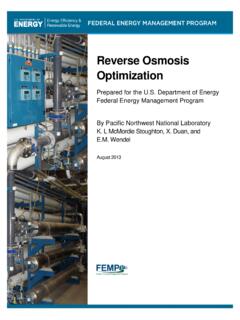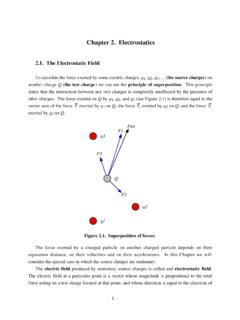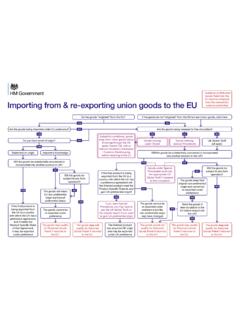Transcription of Module 4 Reactor Theory (Reactor Operations) - Energy
1 DOE Fundamentals NUCLEAR PHYSICS AND Reactor Theory Module 4 Reactor Theory ( Reactor Operations) Reactor Theory (Operations) i TABLE OF CONTENTS T able of Co nte nts TABLE OF CONTENTS .. i LIST OF FIGURES .. iii LIST OF TABLES .. iii REFERENCES ..iv OBJECTIVES .. v SUBCRITICAL MULTIPLICATION .. 1 Subcritical Multiplication Factor .. 1 Effect of Reactivity Changes on Subcritical Multiplication .. 3 Use of 1/M Plots .. 6 Summary .. 9 Reactor KINETICS .. 10 Reactor Period (t) .. 10 Effective Delayed Neutron Fraction .. 11 Effective Delayed Neutron Precursor Decay Constant.
2 13 Prompt 15 Stable Period Equation .. 16 Reactor Startup Rate (SUR) .. 16 Doubling 17 Summary .. 20 Reactor OPERATION .. 22 Startup .. 22 Estimated Critical Position .. 23 Core Power Distribution .. 24 Power Tilt .. 26 Shutdown Margin .. 26 Operation .. 27 Temperature .. 27 Pressure .. 28 Power Level .. 28 Reactor Theory (Operations) ii Flow .. 28 Core Burnup .. 29 Shutdown .. 30 Decay Heat .. 31 Summary .. 32 Reactor Theory (Operations) iii LIST OF FIGURES Figure 1 1/M Plot vs. Rod Withdrawal .. 8 Figure 2 Reactor Power Response to Positive Reactivity Addition.
3 14 Figure 3 Reactor Power Response to Negative Reactivity Addition .. 15 Figure 4 Neutron Radial Flux Shapes for Bare and Reflected Cores .. 25 Figure 5 Effect of Non-Uniform Enrichment on Radial Flux Shape .. 25 Figure 6 Effect of Control Rod Position on Axial Flux Distribution .. 26 LIST OF TABLES Table 1 Delayed Neutron Fractions for Various Fuels .. 12 Reactor Theory (Operations) iv REFERENCES Foster, Arthur R. and Wright, Robert L. Jr., Basic Nuclear Engineering, 4th Edition, Allyn and Bacon, Inc., 1983. Jacobs, , Kline, , and Remick, , Basic Principles of Nuclear Science and Reactors, Van Nostrand Company, Inc.
4 , 1960. Kaplan, Irving, Nuclear Physics, 2nd Edition, Addison-Wesley Company, 1962. Knief, Ronald Allen, Nuclear Engineering: Theory and Practice of Commercial Nuclear Power, 2nd Edition, McGraw-Hill, 1992. Lamarsh, John R., Introduction to Nuclear Engineering, 3rd Edition, Addison-Wesley Company, 2001. Lamarsh, John R., Introduction to Nuclear Reactor Theory , American Nuclear Society, 2002. Knolls Atomic Power Lab, Nuclides and Isotopes: Chart of the Nuclides, 17th Edition, Knolls Atomic Power Lab, 2010. Academic Program for Nuclear Power Plant Personnel, Volume III, Columbia, MD, General Physics Corporation, Library of Congress Card #A 326517, 1982.
5 Glasstone, Samuel, Sourcebook on Atomic Energy , 3rd Edition, Robert F. Krieger Publishing Company, Inc., 1979. Glasstone, Samuel and Sesonske, Alexander, Nuclear Reactor Engineering, 4th Edition, Van Nostrand Reinhold Company, 1994. Reactor Theory (Operations) v OBJECTIVES TERMINAL OBJECTIVE Given the necessary information and equations, EXPLAIN how subcritical multiplication occurs. ENABLING OBJECTIVES DEFINE the following terms: a. Subcritical multiplication b. Subcritical multiplication factor Given a neutron source strength and a subcritical system of known keff, CALCULATE the steady-state neutron level.
6 Given an initial count rate and keff, CALCULATE the final count rate that will result from the addition of a known amount of reactivity. Given count rates vs. the parameter being adjusted, ESTIMATE the value of the parameter at which the Reactor will become critical through the use of a 1/M plot. TERMINAL OBJECTIVE Given the necessary information and equations, DESCRIBE how power changes in a Reactor that is near criticality. ENABLING OBJECTIVES DEFINE the following terms: a. Reactor period b. Doubling time c. Reactor startup rate DESCRIBE the relationship between the delayed neutron fraction, average delayed neutron fraction, and effective delayed neutron fraction.
7 WRITE the period equation and IDENTIFY each symbol. Given the reactivity of the core and values for the effective average delayed neutron fraction and decay constant, CALCULATE the Reactor period and the startup rate. Given the initial power level and either the doubling or halving time, CALCULATE the power at any later time. Given the initial power level and the Reactor period, CALCULATE the power at any later time. Reactor Theory (Operations) vi EXPLAIN what is meant by the terms prompt drop and prompt jump.
8 DEFINE the term prompt critical. DESCRIBE Reactor behavior during the prompt critical condition. EXPLAIN the use of measuring reactivity in units of dollars. TERMINAL OBJECTIVE Without references, EXPLAIN the concepts concerning Reactor startup, operation, and shutdown. ENABLING OBJECTIVES EXPLAIN why a startup neutron source may be required for a Reactor . LIST four variables typically involved in a reactivity balance. EXPLAIN how a reactivity balance may be used to predict the conditions under which the Reactor will become critical. LIST three methods used to shape or flatten the core power distribution.
9 DESCRIBE the concept of power tilt. DEFINE the term shutdown margin. EXPLAIN the rationale behind the one stuck rod criterion. IDENTIFY five changes that will occur during and after a Reactor shutdown that will affect the reactivity of the core. EXPLAIN why decay heat is present following Reactor operation. LIST three variables that will affect the amount of decay heat present following Reactor shutdown. ESTIMATE the approximate amount of decay heat that will exist one hour after a shutdown from steady state conditions. Reactor Theory (Operations) 1 SUBCRITICAL MULTIPLICATION Subcritical multiplication is the phenomenon that accounts for the changes in neutron flux that takes place in a subcritical Reactor due to reactivity changes.
10 It is important to understand subcritical multiplication in order to understand Reactor response to changes in conditions. EO DEFINE the following terms: a. Subcritical multiplication b. Subcritical multiplication factor EO Given a neutron source strength and a subcritical system of known keff, CALCULATE the steady-state neutron level. EO Given an initial count rate and keff, CALCULATE the final count rate that will result from the addition of a known amount of reactivity. EO Given count rates vs. the parameter being adjusted, ESTIMATE the value of the parameter at which the Reactor will become critical through the use of a 1/M plot.
